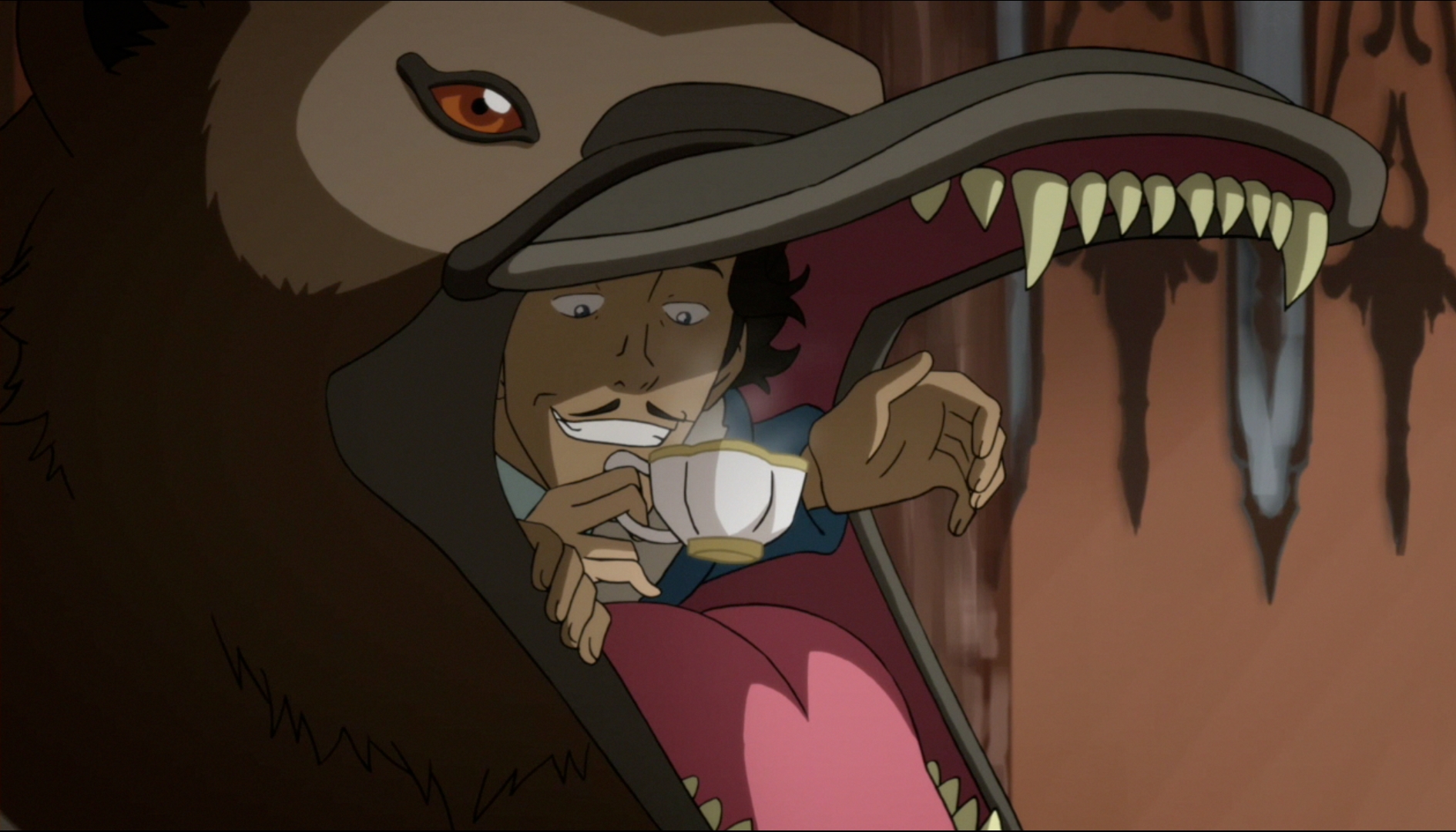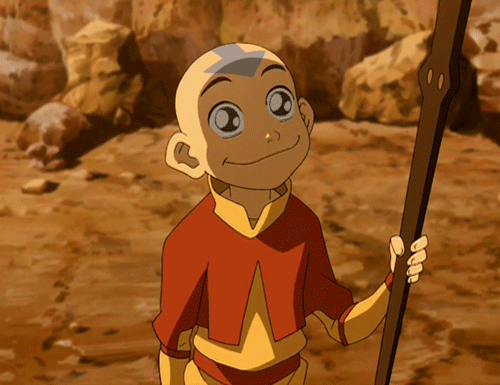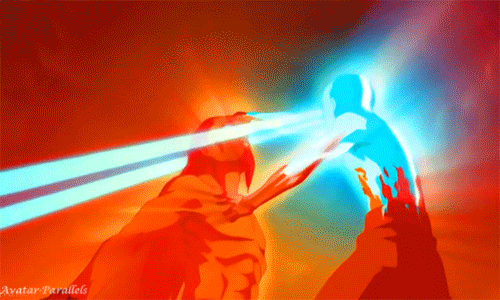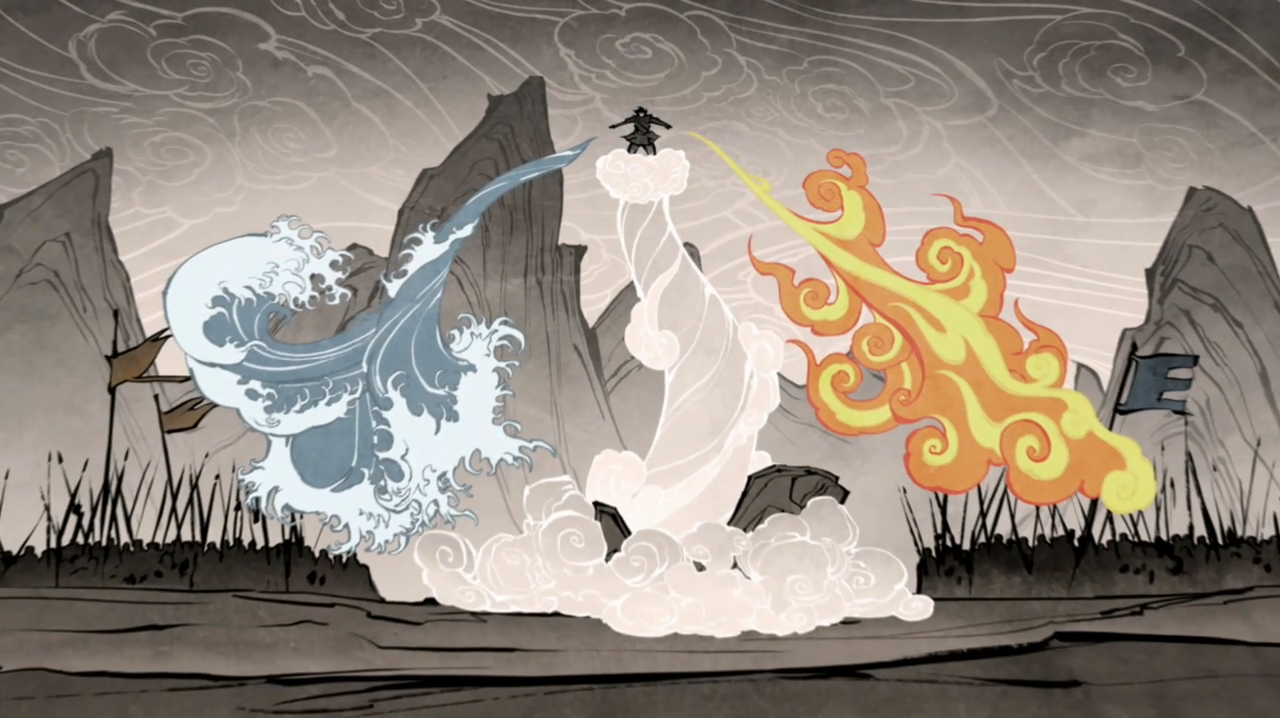We now come to Part 4 of Avatar
Month (and the last of the Top 10 lists), where I talk about what, for me, sets
the great stories apart from the merely good ones; the characters. Great characters can make mediocre, average,
or standard stories vastly more interesting, and turn good stories into great,
or even legendary, ones. And Avatar, like any great epic, has a
wealth of amazingly-written and endlessly interesting men, women, and children
filling out the world with the emotions to get us invested. Some of them are main characters, some are fairly
important side characters, and some are bit roles that pop in and out here and
there.
Like with my Naruto list from last month, since there are so many great
figures in this world, my list is strictly limited to my absolute personal
favorites, so if any other beloved names are left off this, believe me when I
say that no offense or knocks or intended- there just wasn’t room. I did try to limit myself to fairly
significant characters, people in at least two seasons of each series, since
the smaller roles are too numerous to include without overwhelming the
mains. I will, however, give two brief
shout-outs to Koh the Face Stealer and Combustion Man, both of whom might very
well have been on this list if they had not been on-screen as briefly as they
were. Koh remains my favorite out of all
the spirits, and as for Combustion Man, what can I say? I love me some silent villains that blow
things up with their minds.
As with the last post, this list
also mixes The Last Airbender and The Legend of Korra, so the following
names are not just series favorites, they are franchise favorites.
Honorable
Mentions:
Toph, Suki, Milo, Lin Beifong
10. Bolin
To a certain extent, I can
understand the dislike of Bolin emanating from certain corners of the internet. He was clearly meant from the beginning to be
the primary comic relief character in Korra. And since being comic relief was one of Sokka’s
chief tasks in The Last Airbender,
that meant that from the start Bolin was often judged on the basis of how he
measured up to Sokka as the funny guy, and that is a comparison that would be
hard on anyone. Personally, I warmed up
to him very quickly, and I credit much of this to the voice actor (P. J. Byrne). Bolin was clearly written as a more overly
emotional, sentimental guy than any of the other leads, and given a lot of
lines that need just the right touch to come across as genuine, and not
fall-on-your-face silly. Plus, he didn’t
remain stuck in the slapstick role. He
grows a lot by the end, particularly in the very last season where he has to both
acknowledge that supporting Kuvira was a mistake and actively work to rectify
it, and it was this arc that really won him a place in my heart.
9. Verrick
At some point I am going to start a
series dedicated to quotes, and when I get around to doing Legend of Korra, Verrick will likely dominate the list. And how could he not? At first, his character seemed like a
throwaway joke, a Howard Hughes ripoff to take the comedic pressure off
Bolin. He never really ceased to be the
least-serious character in the show, but it works, mostly because his lines
(coupled with John Michael Higgin’s voice acting, of course) were spot-on
comedic gold. I loved every scene he was
in.
8. Korra
If I had written this after Book Two
of Korra (hell, even Book Three),
Korra would not have made this list. I
had had very torn feelings about her from the beginning, mostly because she was
such a polar opposite to Aang. Even
though we begin to see a shift in her in Book Three, it is her deep journey
into her wounded and battered mind in Book Four that marked the real turning
point for me, where I found I didn’t just like her, I loved her, and for the
first time felt heavily invested in seeing her pull through. The sharp contrasts between her and Aang
become a strength- the unavoidable levels of emotional immaturity that plagued
her in the first two seasons make her development in the final two seasons all
the more striking. I am still taken by
the depth of feeling in her final exchange with Tenzin. It was this profound shift, more than
anything she did on the field of battle, that made me see Korra as one of best
characters of the franchise, and a personal favorite of mine.
7. Aang
It’s hard- really, really hard- to not like Aang. Look at his big, stupid grin- how
can you not want to party with this dude?
Okay, obviously that’s not ALL there
is to Aang. He is funny and silly and
impish, and very childlike, but sometimes too much so, to the point where he
makes rash decisions or mistakes that have consequences later on. And said consequences are things that the
show never shied away from, even in the relatively lighter first season- in
just the third episode, on Kyoshi Island, Aang’s refusal to leave after a few
days allows Zuko to track him down there before too long, and the village is
heavily damaged in the ensuing fight. His journey within the show is a constant
battle against his own fears- fear of confronting his biggest mistake in
abandoning the monks, fear of the responsibilities of the Avatar, fear of
failing, fear of hurting others- and it is through having to face the
consequences of his actions that he grows, and is ultimately able to
succeed. Much like Korra’s, it is a
journey as satisfying as it is subtle.
But even with all that written into
your main character, you still want the hero of your fantasy adventure tale to
be someone the audience can’t help but like and laugh along with. So for all the brilliant writing that went in
to him, in a way, Aang’s infectious, pious impishness might be one of the most
crucial parts of his character. It meant
that, no matter how silly he got or how serious the story, we could always
laugh along with him.
6. Azula
God, I hated Azula. Which is just another way of saying I loved
her. Villains will never cease to be
some of the most interesting creations in the world of storytelling, and no
other villain in the entire franchise- and Avatar
has a LOT of great villains- won me over like Azula. She openly calls herself a monster, but even
though we can never be quite sure what led her to the personal path she took-
laying it all on Ozai’s shoulders would have been way too simple- we can intuit
that’s not all there is. She’s not just
a monster, even though she tries so hard to act like one. And the results are, in many instances,
bone-chilling. “The Chase” might have
been the first great example of just how truly ruthless her drive was, her
somewhat-improvised ploy to take over Ba Sing Se eerily brilliant, and her
instant attack upon Aang while in the Avatar state, while seemingly the obvious
response, took major balls. Out of all
the fates handed out to villains within the context of either show, I found her
descent into utter madness to be both immensely fitting, and unexpectedly
heartbreaking to witness.
5. Katara
As much sentimental love as I bear
for Aang, Sokka, and Toph, Katara easily comes out as my favorite of the
original Team Avatar. Fiery, passionate,
and devoted to her friends and family, Katara was every bit as strong and
determined as Azula, but also carried the heart and capacity for love that she
lacked, and that, of course, is something decisive. As young as she is, just barely older than
Aang (at least in TLA), there is a
powerful maturity to how she carries herself.
But she is never too serious! She
is still a young girl, prone to immaturities and errors, but these never feel contrived,
and like all the other great female characters the show provided us, she never
fell into any of the damsel-in-distress tropes.
She was smart, kind, loving, inspiring, and totally kickass, from start
to finish.
4. Iroh
Ah Iroh. Who doesn’t love Iroh? He’s the uncle we always wanted, if we didn’t
have one already. Brimming with wisdom,
with the sheer fighting power to back it up, and brought vividly to life by the
unmatchable voice acting of Mako (later duplicated well enough by replacements
after his death), Iroh is his own unique ideal in the pantheon of older wisemen
figures, and no mere Gandalf-duplicate. And
I kinda want to be him when I’m old. Preferably
the buff Iroh. Thaaaaaat was
awesome.
3. Asami
Even with the realization of
Korrasami at the very end (and, maybe, also because of it), I never got all the
Asami I wanted from Legend of Korra. Unless Korra
gets its own comics series sometime in the future (please?), that will remain a
personal disappointment. She’s like an
older, steampunk version of Katara- strong in her own way, fiercely intelligent
and independent, beautiful, and never allowing others to doubt her talent or
ability. Her self-confidence leaps off
the screen, but she is still fully human- she’s hit hard by many of the events
in her life, and she allows it show, but she never lets it get her down. I love how (and I’ve commented on this before), even though Asami is very much the most “conventionally” attractive/sexy
female character in the show- curvy, long dark hair, slender, rich red lips,
and lily-white- she’s nearly always wearing an engineering overcoat and workman’s
gloves. And not once is her intelligence
questioned. THAT is how you write a
great female character.
2. Tenzin
From almost the very first time we
meet him, I felt like Tenzin was written specifically for me. Tall, gangly, pleasant but quiet with others,
deeply philosophical, and immensely awkward, he seemed to reflect so much of what I see in myself (minus the blue tattoos....for now...). So, for me, this is probably the most
personal of these choices, the character I identified with the most. Even if the fates toyed with him a bit, and
he was never able to play quite the decisive, leading role in the fate of the world
that he’d always wanted, he never allowed it to burden him with hurt ego. In a way, his personal struggle to come to
terms with this- that it’s okay for him to not be a second Aang- that was one
of the best aspects of the troubled second season, leading to his attainment of
a small, personal form of enlightenment in the Spirit World.
1. Mako
Just kidding. But seriously…
1. Zuko
I know, you’re shocked. What else can I say? Zuko’s transformation from a callous villain
to a genuine hero of profound personal wisdom is perhaps the single greatest
act of artistic mastery of the entire franchise to date (a franchise full of
masterful artistic achievements!), an incredible fusion of expertly-paced,
spot-on writing and superb voice acting (TO THE BASC). Its completion of this arc was a key reason I
had his final battle with Azula right near the top of my Favorite Battles list. On top of being thrilling action
and being gorgeous to look at, it was profoundly emotionally satisfying. Add to this his arcs in the comics and his
timely appearances in Legend of Korra,
and there’s no other character I can picture calling my favorite out of the
entire Avatar franchise.
With that, the Top 10 part of Avatar month comes to a close. Keep checking in though, because I’ll have a
few more topical overviews of the franchise up before the month is out.
-Noah
Franc



















